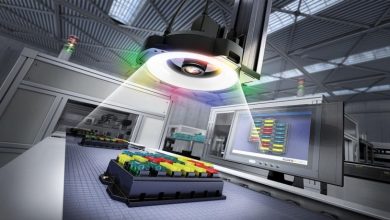Erik Hosler on High-Entropy Alloys: The New Frontier in Semiconductor Materials Science

As semiconductor technology advances, the search for materials that offer superior performance, durability and efficiency is accelerating. High-entropy alloys (HEAs), a novel class of multi-element materials, are emerging as a groundbreaking solution in semiconductor fabrication. Erik Hosler, a specialist in advanced materials for semiconductor applications, highlights that HEAs provide unique thermal and electrical properties that can enhance the next generation of electronic devices, from high-speed processors to power-efficient chips.
What Makes High-Entropy Alloys Unique?
Traditional semiconductor materials, such as silicon and gallium arsenide, have well-defined crystal structures with one or two primary elements. HEAs, on the other hand, consist of multiple principal elements mixed in near-equal proportions, creating complex atomic arrangements that offer remarkable properties. These materials exhibit exceptional mechanical strength, high thermal stability and superior resistance to wear and oxidation, critical factors in semiconductor manufacturing.
By incorporating HEAs into semiconductor processes, researchers aim to improve transistor performance, enhance energy efficiency and extend the lifespan of chips operating in extreme environments.
HEAs in Next-Generation Semiconductor Applications
One of the most promising applications of HEAs is in advanced interconnects and thermal management systems. Modern processors generate significant heat, and traditional materials struggle to dissipate it efficiently. HEAs have superior thermal conductivity that can address this challenge, reducing overheating issues and improving overall device reliability.
Additionally, their resistance to electromigration—where materials degrade due to prolonged electrical current flow makes HEAs ideal for ultra-dense chip architectures. Erik Hosler points out, “The integration of emerging materials and advanced processes into CMOS technology is critical for developing the next generation of electronics.” By incorporating HEAs into CMOS fabrication, semiconductor manufacturers can push the boundaries of chip performance while maintaining stability.
Challenges and the Path to Commercial Adoption
Despite their potential, HEAs face challenges in large-scale semiconductor manufacturing. Precise control over composition, fabrication costs and integration with existing lithographic techniques remain hurdles that researchers are actively working to overcome. Advanced deposition methods, such as atomic layer deposition and molecular beam epitaxy, are being explored to refine HEA-based semiconductor structures.
Shaping the Future of Semiconductor Materials
High-entropy alloys (HEAs) represent a paradigm shift in semiconductor materials science. Their ability to enhance durability, thermal management, and electrical efficiency positions them as key enablers of future electronic advancements. By offering superior resistance to wear and oxidation, HEAs ensure longer-lasting and more reliable semiconductor components, even under extreme operating conditions. Their ability to maintain structural integrity at high temperatures makes them particularly valuable for next-generation processors and power electronics. As research continues, HEAs could also play a role in emerging fields such as neuromorphic computing and flexible electronics, where material stability and adaptability are critical.




